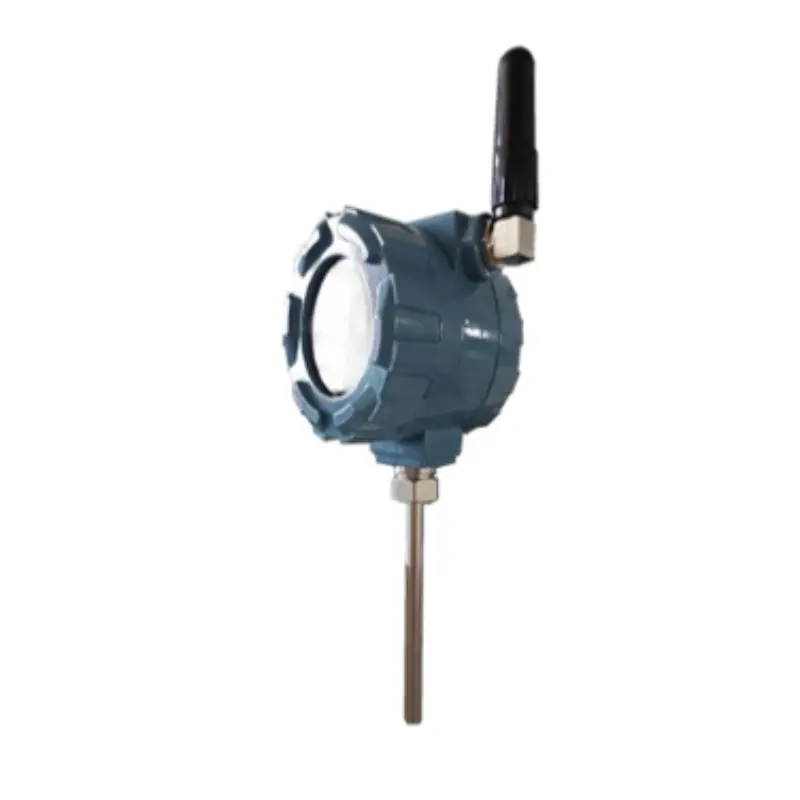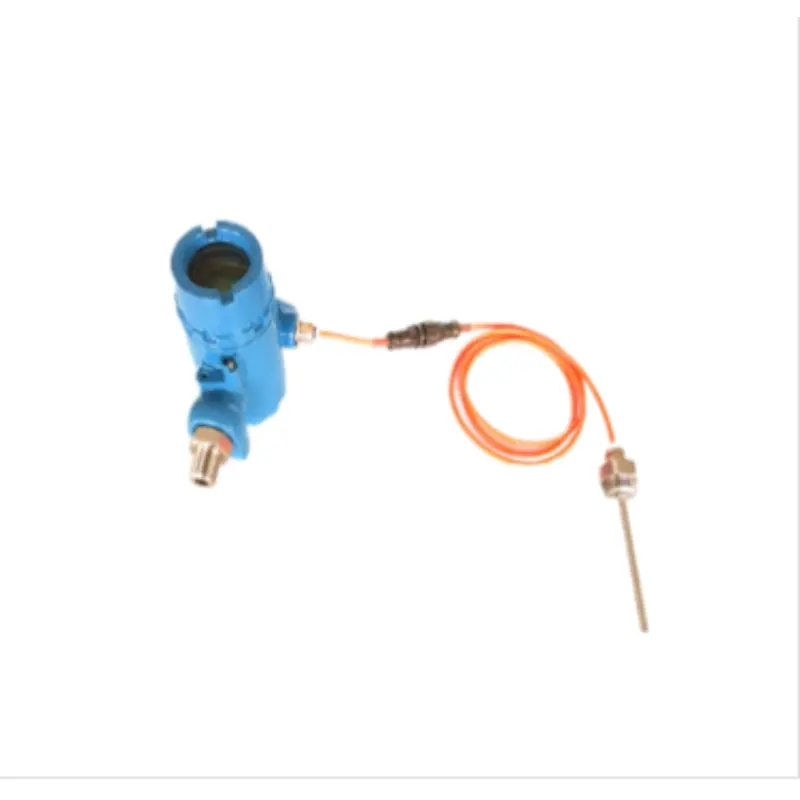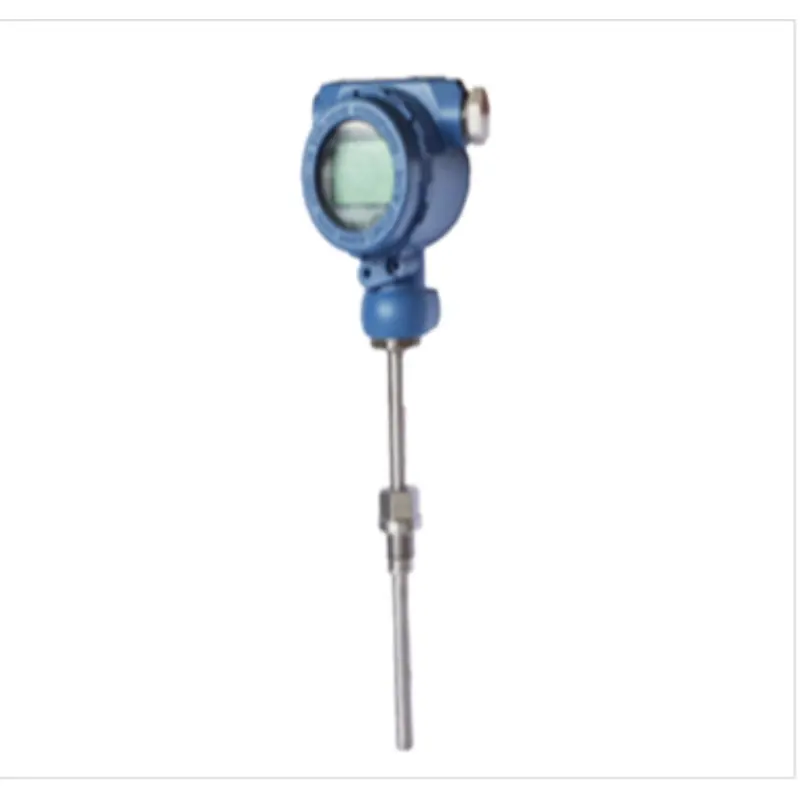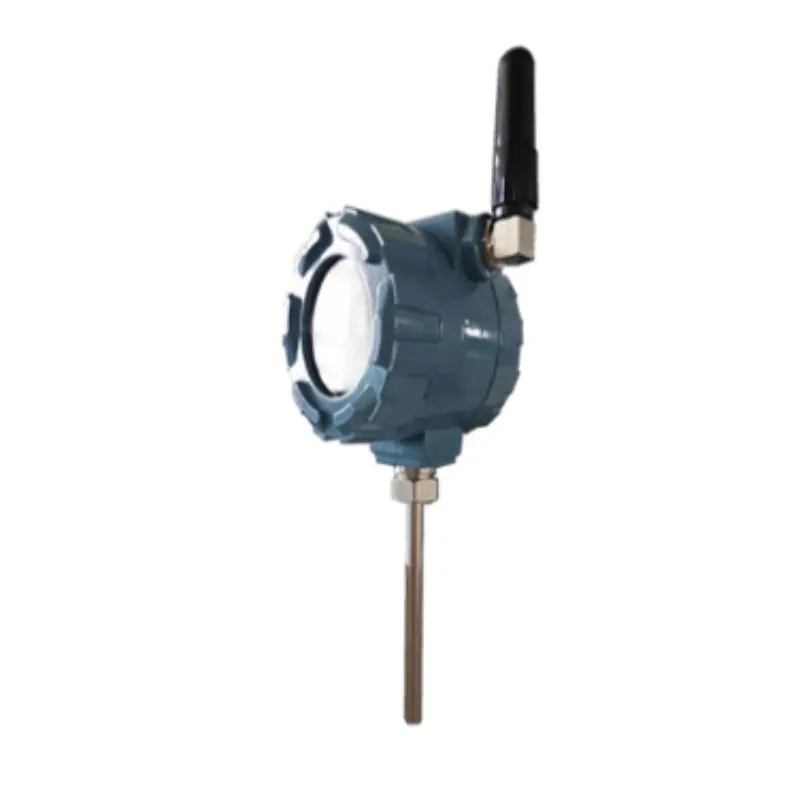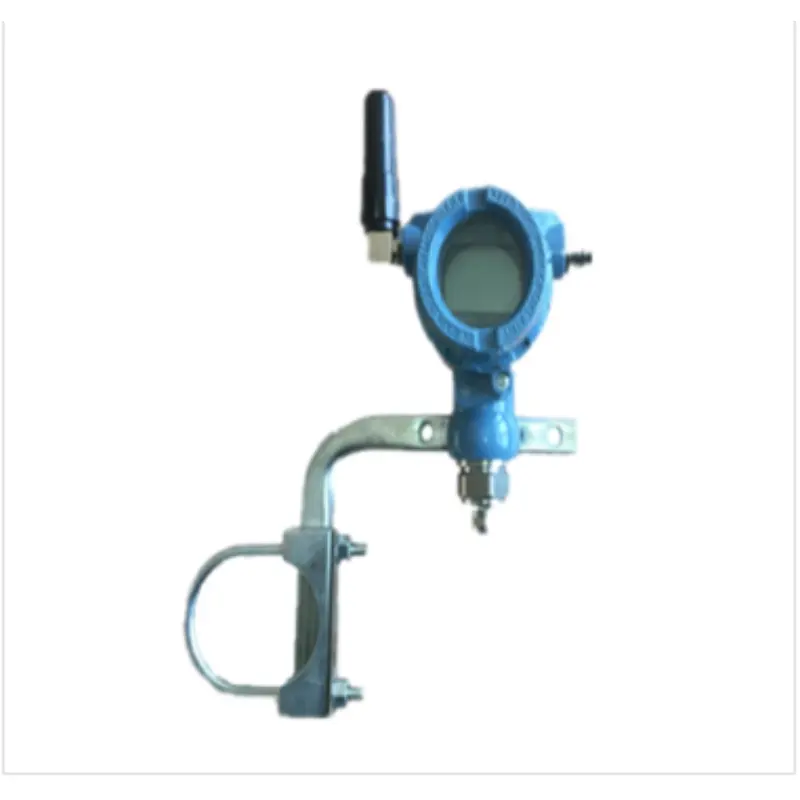
Temperature transmitter/SM39-DH01T HART protocol intelligent temperature transmitter
Product Categories Temperature transmitter
SM39-DH01T HART protocol intelligent temperature transmitter is a high-precision, high-stability, multi-parameter, 4.5-digit LCD display intelligent temperature measurement product that complies with the HART protocol. Users can use the HART communicator to manage, adjust or monitor process variables of the HART instrument running in the process, or use buttons for on-site configuration, which is easy to operate. Precision digital nonlinear correction technology, safe and reliable explosion-proof structure design and standardized signal output, high accuracy, wide range coverage, suitable for places where precision measurement is required. This product works in a two-wire mode and can directly replace the analog two-wire 4-20mADC output transmitter. It can be widely used in various fields such as petroleum, chemical, steel, electric power, building materials, textiles, pharmaceuticals, food, gas, scientific experiments and military industry. It has been promoted and applied in oil fields such as Daqing, North China, Xinjiang, etc., and has won user recognition for its high accuracy, high reliability, simple installation, convenient maintenance, environmental protection and durability.
1. Overview
SM39-DH01T HART protocol intelligent temperature transmitter is a high-precision, high-stability, multi-parameter, 4.5-digit LCD display intelligent temperature measurement product that complies with the HART protocol. Users can use the HART communicator to manage, adjust or monitor process variables of the HART instrument running in the process, or use buttons for on-site configuration, which is easy to operate. Precision digital nonlinear correction technology, safe and reliable explosion-proof structure design and standardized signal output, high accuracy, wide range coverage, suitable for places where precision measurement is required. This product works in a two-wire mode and can directly replace the analog two-wire 4-20mADC output transmitter. It can be widely used in various fields such as petroleum, chemical, steel, electric power, building materials, textiles, pharmaceuticals, food, gas, scientific experiments and military industry. It has been promoted and applied in oil fields such as Daqing, North China, Xinjiang, etc., and has won user recognition for its high accuracy, high reliability, simple installation, convenient maintenance, environmental protection and durability.
2. Features
4~20mA current output superimposed with HART protocol digital communication (two-wire system);
·Adopt digital nonlinear correction technology;
On-site key operation is available for easy configuration;
·Protection grade IP67.
3. Performance indicators
Measuring range: -200~650℃ (customizable);
Accuracy: ±0.5 %FS (customizable)
Working temperature: -20℃~80℃
Storage temperature: -40℃~85℃
Power supply: (15~30) VDC (24VDC recommended)
Digital output: (4~20)mADC output superimposed with HART protocol digital communication
Display: LCD display, two/three-button control
Damping: (0~32)s
Insulation: 100MΩ/50V
O-ring: Fluororubber
Weight: Approx. 1.7kg
Protection grade: IP67;
Explosion-proof certificate number: CE18.1518 Explosion-proof mark: Exd IIc T4 Gb.
4. Appearance and structure (unit: mm)
The appearance structure is shown in Figure 1.

5. Installation
The general installation method is: the sensor probe sleeve is welded on the pipeline (or the device to be measured), and the sensor is screwed on the probe sleeve. The following is the installation instructions for the oil pipe of the pumping unit, and other applications are similar.

The operation process is (as shown in Figure 2):
(1) Close the valve of the oil pipeline and release the pressure. Open a hole in the oil pipeline that is slightly larger than the outer diameter of the sensor probe base;
(2) Insert the base from the opening to the maximum depth, adjust the base to form a 45° inclination with the oil flow, and then seal and weld it to the oil pipe along the hole;
(3) Inject heat transfer oil into the base, about 2/5 of the volume of the tube;
(4) Insert the temperature sensor probe into the base, tighten the sensor with a wrench stuck in the hexagonal prism, and open the pipeline valve to restore.
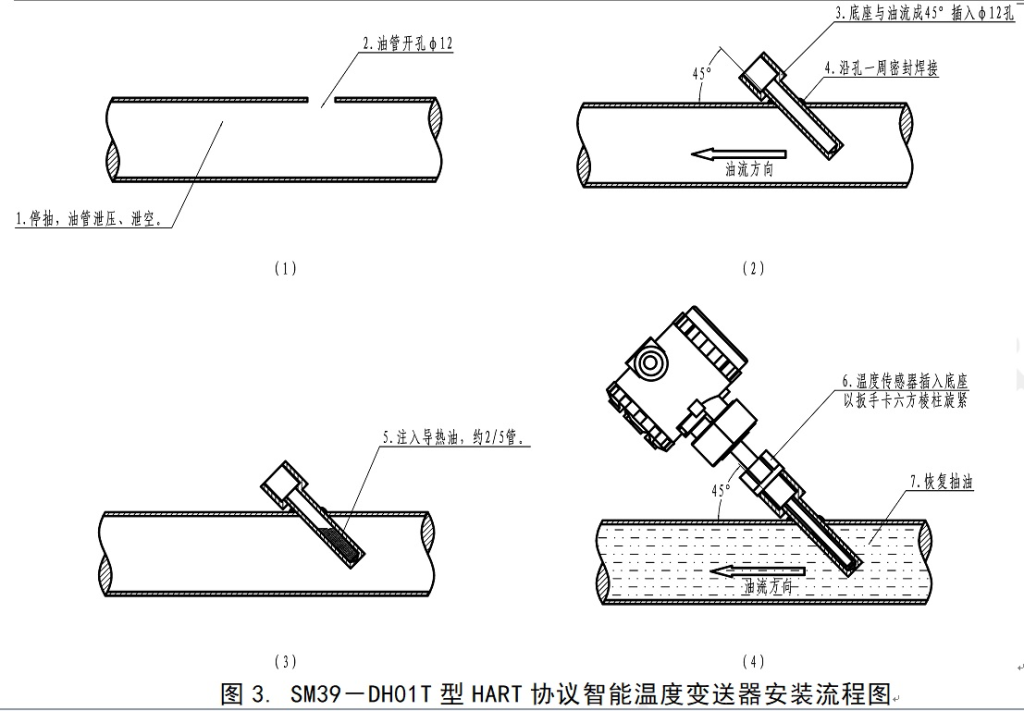
6. Electrical connection
Open the back cover of the instrument (terminal side) to see the terminal blocks. The power connection is shown in Figure 4: 1 (red) and 2 (black) on the left are for sensor power supply and signal wiring, regardless of positive or negative polarity. The 4 pins on the top are the fixed ends of the grounding wire and shielding wire.

7. Notes
7.1. All sensors are digitally calibrated, and different sensors are completely consistent and interchangeable.
7.2. Connect the sensor power supply and signal wiring to the left end of the three-core terminal POWER1+ (red) and POWER 2- (black), install and tighten the back cover. Pay attention to tighten the sheath to prevent water leakage.



